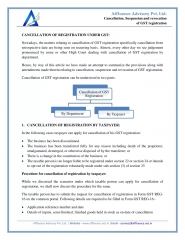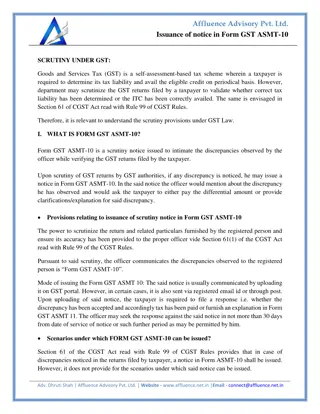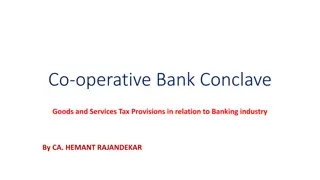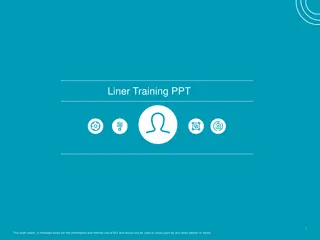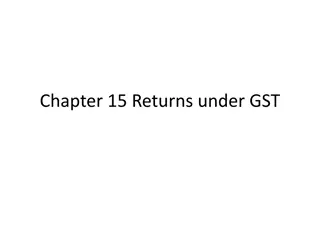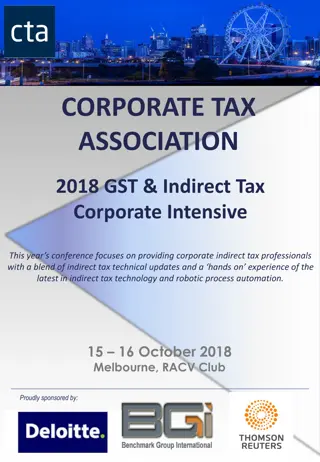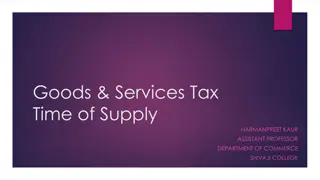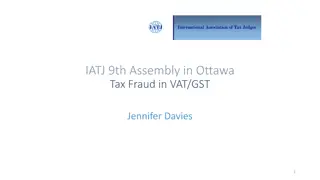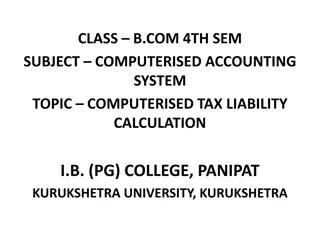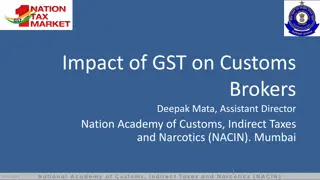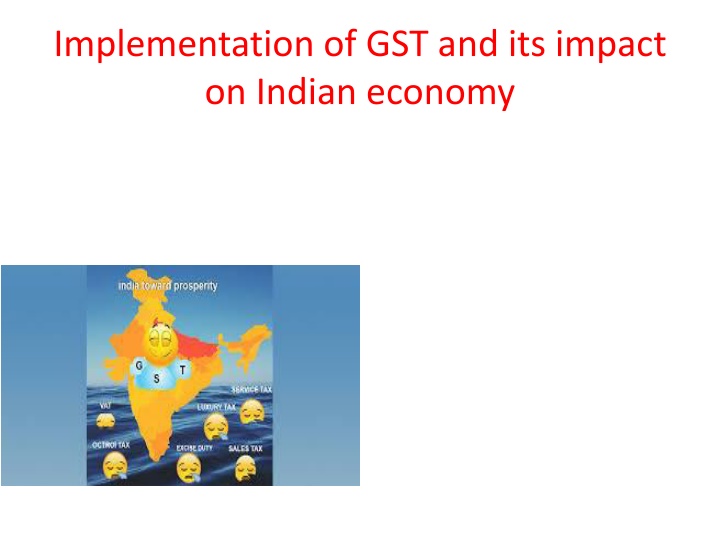
Impact of GST Implementation on the Indian Economy
Explore the implementation of Goods and Services Tax (GST) in India, its objectives, methodology, and impact on the economy. Discover the benefits, challenges, and key findings of GST to gain a comprehensive understanding of its effects on the Indian market.
Download Presentation

Please find below an Image/Link to download the presentation.
The content on the website is provided AS IS for your information and personal use only. It may not be sold, licensed, or shared on other websites without obtaining consent from the author. If you encounter any issues during the download, it is possible that the publisher has removed the file from their server.
You are allowed to download the files provided on this website for personal or commercial use, subject to the condition that they are used lawfully. All files are the property of their respective owners.
The content on the website is provided AS IS for your information and personal use only. It may not be sold, licensed, or shared on other websites without obtaining consent from the author.
E N D
Presentation Transcript
Implementation of GST and its impact on Indian economy
Introduction Introduction of the Value Added Tax (VAT) at the Central and the State level has been considered to be a major step an important step forward in the globe of indirect tax reforms in India. If the VAT is a major improvement over the pre-existing Central excise duty at the national level and the sales tax system at the State level, then the Goods and Services Tax (GST) will indeed be an additional important perfection the next logical step towards a widespread indirect tax reforms in the country. Initially, it was conceptualized that there would be a national level goods and services tax, however, with the release of First Discussion Paper by the Empowered Committee of the State Finance Ministers on 10.11.2009, it has been made clear that there would be a Dual GST in India, taxation power both by the Centre and the State to levy the taxes on the Goods and Services.
Objectives of the study To understand the concept of GST. To find out the benefits and problems of GST. To find out the impact of GST on Indian economy. To draw the suggestion based on the study.
Methodology of study This study based on the primary data and secondary data. Primary data has been collets from interview of the people and the secondary has been collects from the various sources . Internet has been used to collects this data .
Discussion What is GST? GST stands for Goods and Services Tax ,and is proposed to be a comprehensive indirect tax levy on the manufacturing , sale and consumption of goods as well as service at national level. It will replace all indirect taxes levied on the goods and services by the Indian central and state governments.
Findings Benefits problems of GST Revenue will get a boost: The number of tax exempt goods will decline . Input tax credit will encourage supplier to pay taxes . Life gets simpler: GST will replace17 indirect tax levied and compliance costs will fall. A common market : its currently fragmented along states lines, pushing costs up 20-30% Logistics ,inventory costs will fall: check at state borders slow movement of truck. In India , they travel 280 km a day compared with 800km in US. Investment boots : expected a 6% rise in capital goods investment ,2% overall.
Problems The tax on services would go up substantially from 14% to 20%. Tax on retails would be almost double . Imported goods would be taxed at higher rate by around 6% There will be dual control on every business by central and state government .so compliance cost will go up. All credit available on from online connectivity with GST network .hence small business may find it difficult to use the system.
Impact of GST Service will become expensive like telecom, banking airline etc. Being a new tax ,it will take some time for the people to understand its implications. If actual benefit is not passed to consumer and seller increase his profit margin , the prices of goods can also rise trend. It is a consumption based tax ,so in case of service the place where services is provided needs to be determined.

